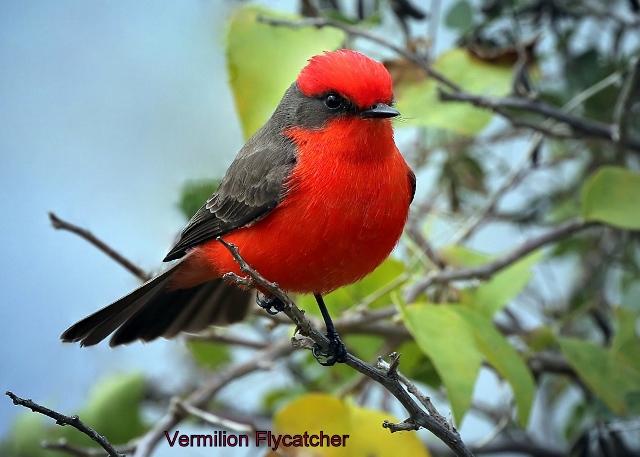by Marilyn Lorenz photos by Chuck Lorenz

There are thirty-seven flycatchers in the family known as Tyrant Flycatchers and most of them are rather dull greyish-brownish birds with yellow undersides. Then there is the Vermillion Flycatcher and whatever else you can say about him he is definitely not dull. Pyrocephalus rubinus or firehead ruby red is a vivid red that has to be seen to be believed. One of the Spanish names for this little flasher, and probably most descriptive, is brasita de fuego, or little coal of fire.
The male has a back and wings and mask of brownish-black with vivid, vibrant, shockingly red head and underparts. When seen in the sunlight he seems to be lit from within and glows like a live coal, indeed.
The female, as usual, is not as flashy but she is still a fit partner for this star of the show. Her back and wings are softer shades of grey and her undersides are white with narrow streaks that run into a blushing belly and under-tail coverts.
He must know how good looking he is for he is certainly not shy. Like most flycatchers he likes to find himself a good perch to look out for flying insects and will jump up to catch them in mid air, then carry them back to his perch to eat and wait for the next course.
In summer they range from the Edwards Plateau to the Hill Country and on down here along the Rio Grande, but we see more of them in the winter than summer. They like open woodlands and thickets but always near water in the form of ponds, streams or irrigation ditches. Fortunately for me, they especially like golf courses.
In nesting season the female will lay two-to-four eggs which are speckled brown and lavender. She incubates them for two weeks and both parents work hard to feed their brood. The young males will match their dad in color by the summer of their second year.